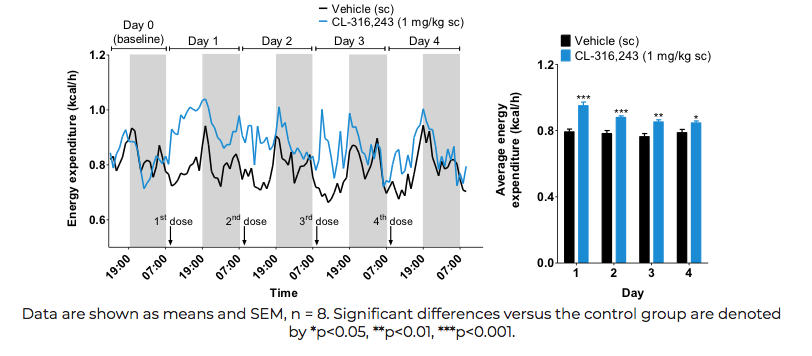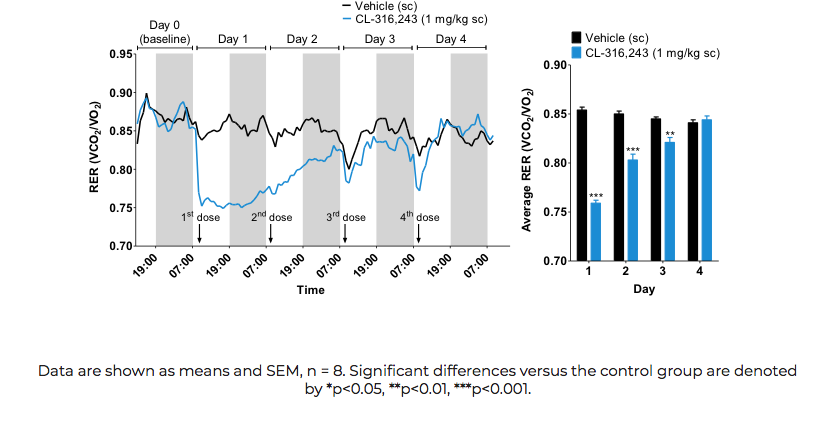Assessment of Energy Expenditure
The mechanisms underlying the reduction in body weight produced by novel anti-obesity drugs should always be investigated by measuring the effects of the compound on both sides of the energy equation balance.
Energy Expenditure
We offer a fully comprehensive metabolic profiling service using the TSE PhenoMaster system. This 16-cage indirect calorimetry system, equipped with motion sensors and automated food and water hoppers, can be used to determine the effects of novel test drugs on energy expenditure. The following parameters can be measured simultaneously to elucidate the mode of action underpinning weight loss effects:
- Oxygen consumption (VO2)
- Carbon dioxide production (VCO2)
- Energy expenditure (derived from VO2and VCO2)
- Respiratory exchange ratio (RER; an estimate of relative substrate utilisation, ie shifts in fat and carbohydrate utilisation)
- Food and water intake
- Meal and drink patterns (ie frequency and size)
- Ambulatory and rearing activity (measured as beam breaks)).
The TSE PhenoMaster can be used to study mice or rats.
The beta-3 adrenoceptor agonist, CL-316,243, increases energy expenditure in the dietary-induced obese (DIO) mouse

The beta-3 adrenoceptor agonist, CL-316,243, increases utilization of fat (reduces RER) in the dietary-induced obese (DIO) mouse

Get in touch for more information or browse our models of metabolic disorders.
